Is Water a Fuel? Well No, But Actually Yes. Sort Of?
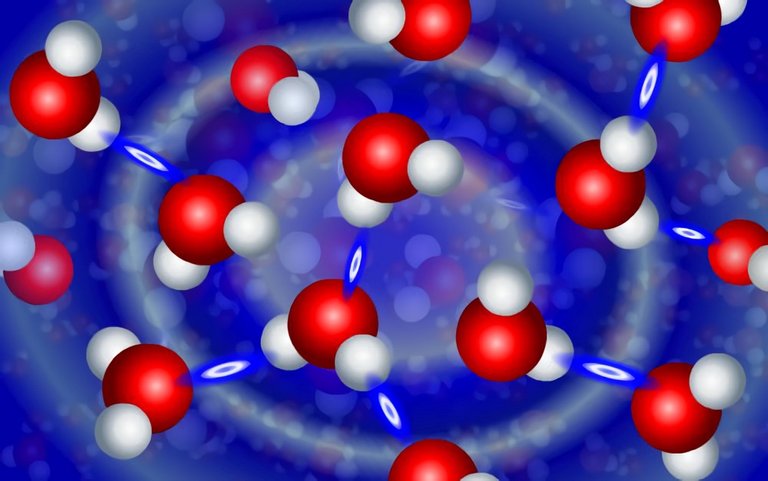
If you’ve ever had the misfortune of reading the comments under any Youtube video about electric cars or alternative energy, you’ve probably seen someone shilling perpetual motion machines of some kind. Usually the “free energy magnetic motor”, an investment scam dating back to the 1800s(!) but equally popular is the claim of a water powered car, an engine that runs on any fluid or similar.
I guess I’m a masochist because I always succumb to the temptation of arguing with guys like that. They’re the type who think it’s a brilliant idea to put alternators on electric cars and use them to constantly recharge the battery while driving (thus inventing a worse version of regen braking) or wanting to know why nobody’s thought of putting wind turbines on electric cars yet, for the same purpose.
This genre of dude operates on what I call the thought experiment principle. They perform a sort of simulation of their invention ideas in their head, according to what they understand of how physics works. If the device works in their thought experiment, they’re absolutely convinced that there’s something to it. The alternative possibility, that they don’t understand physics well enough, does not occur to them.
This is the perspective from which a wind turbine powered EV seems to make sense, if you don’t understand the conservation of energy. It works in their head, so you must simply not grasp their vision, and that’s why you don’t agree that it’ll work. I had an argument of this kind with a fellow who insisted water powered cars were being suppressed by the government / big oil once.
He explained it as a vehicle which runs on either a hydrogen fuel cell or a hydrogen fueled combustion engine, some of the energy from which is used to continually split hydrogen and oxygen out of water in an onboard tank, via electrolysis. “The best part is”, he concluded, “since the hydrogen and oxygen are combined in the engine or fuel cell to propel the car, the only emission is water!”
I asked him to repeat what he just said. He did, and still didn’t see a problem with it. So I had him draw me a diagram of the vehicle. Whereupon I got out my own pencil and added to the drawing, redirecting the exhaust pipe back into the fuel tank. I could see his eyes widen when I did this, suddenly realizing the problem. He objected that what comes out of the exhaust pipe is “emissions water”.
I asked if emissions water is chemically different from the water used for fuel. He kept starting to say something, then reconsidering. Then starting to say something else, then reconsidering. Modeling the problem internally, in thought experiment space, continually running into the same barriers, unable to find an alternate solution. I could practically smell the smoke coming out of his ears.
This is the only way to change the minds of these guys. You can’t explain why it won’t work based on physics they don’t understand. You have to work within the scope of what they do understand, and cause it to no longer work within their own thought experiment, the only source they trust. Even having done this, all I got from him was a “I need to think about this more, I’ll get back to you.”
I’m not always the one doing the schooling, however. Sometimes I’m the one getting schooled. Can’t always be the windshield in life, some days you’ve gotta be the bug instead. During a speculative discussion about why UAPs are often spotted over the ocean and near nuclear reactors, someone suggested they were monitoring our progress towards fusion, and appropriating some of our seawater to use as fuel in their own fusion reactors.
Salt Water Derived Deuterium as a Fusion Fuel
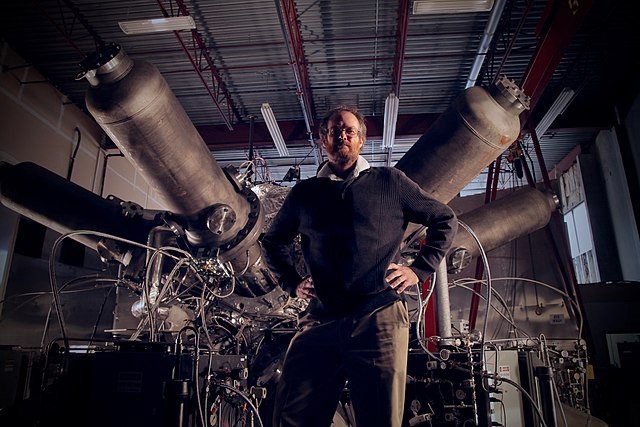
That didn’t sound right to me. To be fair they didn’t mention fusion initially, so all the info I went in with was that somebody was treating water as a fuel. Chemically speaking water is a collapsed lower energy state, hydrogen and oxygen are the separated, higher energy state. So from a chemistry standpoint water is not a fuel, it’s an ash, so to speak.
The same isn’t true from a fusion standpoint. Seawater contains deuterium, a stable isotope of hydrogen that can be used as a fusion fuel. What’s more, you can use the resulting heat to boil some of that water, driving a steam turbine, as you would in a nuclear reactor. This is what specialists in the industry call a Big Fucking Deal™, provided fusion power proves workable.
This would make some absolutely crazy shit possible. For example, a fusion powered submarine would have an endurance limited only by mechanical wear and onboard food supply, assuming the machinery needed to separate out the deuterium from seawater could be sufficiently miniaturized. Then again modern compact nuclear reactors used in newer SSGNs last the life of the boat without refueling, so their endurance is already limited primarily by how much food they can fit onboard.
Since the earliest experiments with fusion energy circa 1970, it has improved by a billion fold. From 1/10 of a watt generated for a fraction of a second, to 16 megawatts generated for a full second. The next big milestone is to generate 500 megawatts for 500 seconds (8.3 minutes). It was predicted at one point we’d hit that milestone by 2020, but as ought to surprise nobody by this point, net-positive fusion is a very tough nut to crack.
Arguably this isn’t really water-as-fuel in the way alt energy conspiracy guys mean it, since deuterium is the only thing being consumed. It’s close enough in my book though, case closed, there’s at least one scenario in which water is a fuel. Critically, it’s a potential use that doesn’t contradict the laws of physics, unlike the water fueled car.
However there are a few other energy generating technologies which incorporate salt water as a consumable. It isn’t technically where the energy is coming from, but it is used up in the reaction and needs to be replenished for the devices to continue putting out current. That’s close enough to be interestingly confusing, in the context of a discussion about when salt water is or isn’t a fuel imo.
Aluminum-Air Batteries
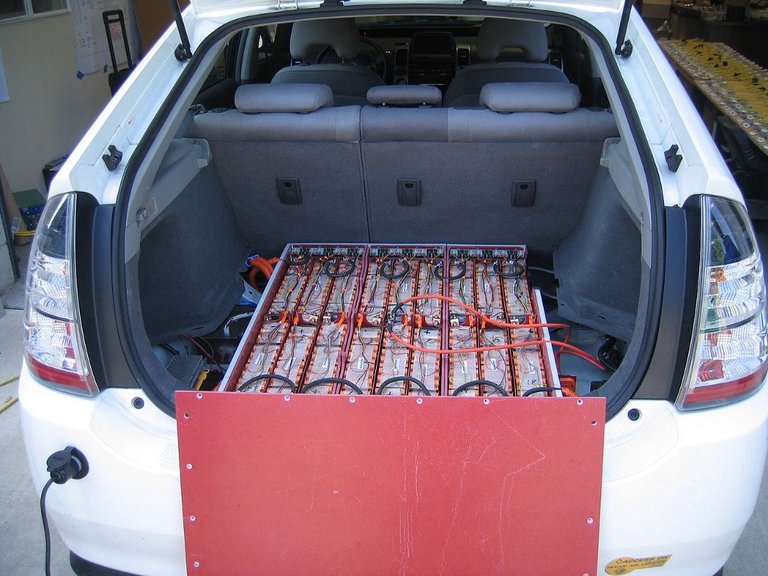
LossIsNotMore via Wikipedia Commons
One such application is aluminum air batteries. These are among the most energy dense batteries that can theoretically exist based on what we currently know of battery chemistry. The major downside is that so far nobody’s figured out how to build one that doesn’t ruin itself completely after about three recharges, with a 33% or so reduction in usable capacity after each charge. Functionally speaking, it’s a primary cell (aka disposable).
It was nevertheless considered as an optional EV range extender by Tesla at one point just because of how insanely energy dense it is. A single aluminum air battery about four feet long by one foot tall and one foot wide ++propelled a small electric car fully a thousand miles in a test by Phinergy++. This is the kind of energy density that could make electric transatlantic airliners possible, if only we could recharge it more than a couple of times.
It’s so energy dense in part because half the chemical reaction is oxygen, which doesn’t have to be carried in the battery because it’s freely available anywhere within Earth’s atmosphere. The other half is that aluminum contains a lot of stored chemical energy that can be unlocked in a simple reaction only requiring oxygen and salt water (the electrolyte). Aluminum is also an easy and relatively environmentally friendly metal to recycle.
The idea was, you’d have an electric car with a lithium main battery good for perhaps 100 miles, then a secondary aluminum air backup battery you’d only dip into in emergencies to make sure you’re never stranded. This way the capacity would get used up very gradually. When it dies, you maybe recharge it once. But after that, you take it to the mechanic to get it removed for recycling, replaced with a fresh one.
Basically they just need to melt down the corroded aluminum plates and reform them. That process is what puts the chemical potential energy back into the metal. As you drive it however, the salt water evaporates as an unavoidable consequence of the chemical reaction taking place. So you’d need an onboard salt water tank to automatically replenish the lost electrolyte as you drive.
Ultimately the EV industry didn’t go that route. Lithium ion batteries improved enough and fell in price enough that a 2021 model S LR has a 400 mile range for around 90 grand. That’s finally at range parity with gas vehicles. A 300 mile Model S LR cost 77 grand in 2012 though, so while there’s been progress increasing battery energy density and bringing down cost, it hasn’t been as rapid or dramatic as many hoped.
It’s where it needs to be to totally replace gas in all automotive applications however, all that remains at this point is waiting for the price to drop. The hypothetical format war between all lithum and hybrid lithium-aluminum air never happened. Even though research continues into various metal-air battery chemistries (aluminum-air, iron-air, zinc-air and lithium-air) there’s still not been any breakthroughs in cycle life.
So, there’s a battery you can use in electric cars that consumes salt water. But we hopefully agree it isn’t a fuel, even though it’s depleted as you drive and must be continuously or periodically replenished for the vehicle to keep working. The energy doesn’t come from the salt water, per se. It’s just the electrolyte, facilitating a chemical reaction which liberates energy stored in aluminum plates, destroying them in the process.
Magnesium-Air Fuel Cells
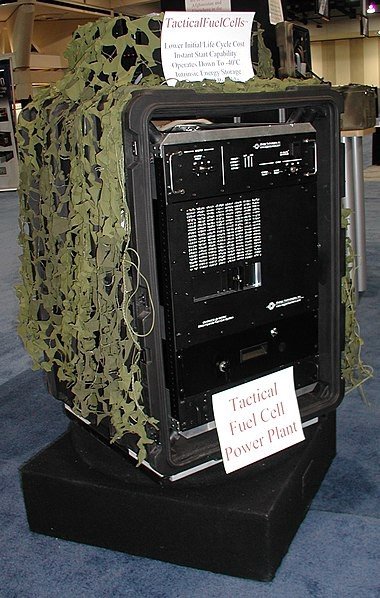
Renewableandalternativeenergy via Wikipedia Commons
Much the same is true of the magnesium-air fuel cell. At least that’s typically how it’s advertised, despite not really being a fuel cell of any kind. If ever you performed the common children’s science experiment in school where you stick two dissimilar metals into either end of a lemon (or a potato) and power a digital clock from it, you more or less understand how magnesium-air fuel cells work.
They are, as you may have already surmised, a type of battery. The single use sort, a primary cell, like aluminum-air. It differs only in the metals the plates are made out of, being optimized for lower current output, but over much longer periods. This gives the illusion of a device which genuinely consumes water as a fuel and generates electricity from it, wearing down gradually in the process.
In reality it isn’t wearing down in the mechanical sense, or even in a manner analogous to lithium battery degradation (which is a consequence of dendrite formation). The magnesium plates themselves are the real fuel, being consumed over time in an ongoing chemical reaction wherein oxidation gradually changes the elemental composition of the metal until all the potential energy in it has been depleted.
It lasts long enough to be a practical off-grid energy source however, in particular for sailboats, which make sparing use of electrical energy and are generally surrounded by a functionally limitless supply of salt water. And yet…can you guess what I’m going to say? That’s right. Even in this case, the water isn’t where the energy is coming from.
It’s still just an electrolyte, facilitating ion exchange. It’s a necessary consumable, so in that sense you could argue that denying it’s a fuel is just a semantics game. But it isn’t from a physics and engineering standpoint. The magnesium plates are the real energy source in this equation, it’s just more appealing from a marketing standpoint to posture as if water is the fuel. Consumers who aren’t tech-savvy like the sound of that better than a big costly single-use battery large parts of which will need to be recycled in a year or two, depending on how hard they use it.
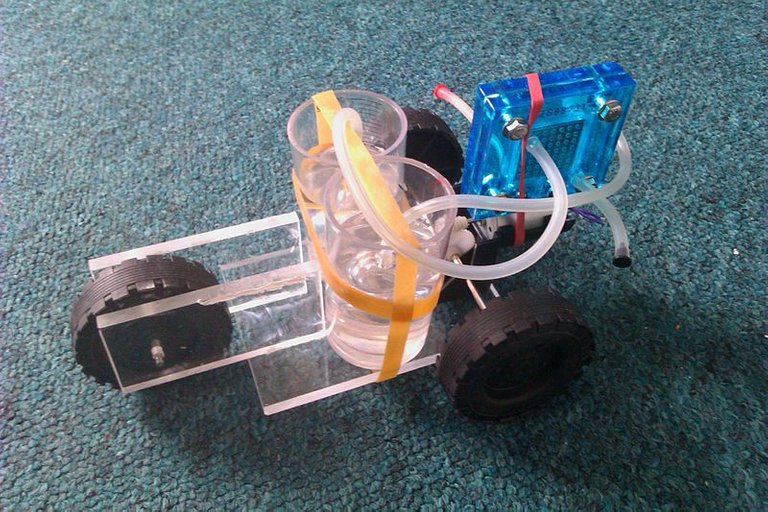
Matthew Venn via Wikipedia Commons
This is generally the tech used in those children’s science kits you may have seen sold in museum gift shops, referred to as a “salt water fuel cell car”. It’s just a scaled down magnesium air fuel cell (battery) which doesn’t begin generating current until salt water is added, giving the tantalizing illusion that the little toy car you’ve built is powered by salt water. Hopefully having read all of this, now you know better (if you didn’t before).
Sodium Silicide Fuel Cells

Horizon Fuel Cell Technologies via Wikipedia Commons
This is a bit of an oddball. It’s a solid fuel you add water to in order to start the reaction, so you might assume it belongs in the same category as the prior two technologies. It doesn’t! This one really is a fuel cell. Specifically a hydrogen fuel cell. Where the sodium silicide comes in is as a means of storing hydrogen without having to compress it to extremely high PSI, supercool it, or both.
The inconvenience of storing hydrogen, once you generate it, has been a key stumbling block for hydrogen fuel cell technologies. There’s been a few interesting innovations in storing hydrogen sans compression, like injecting it into porous metal hydride material (ala Horizon’s “HydroStik” cartridges) but that’s not what I’m referring to here.
Sodium silicide looks a bit like white sand. It stores hydrogen chemically, bound up in sodium silicide molecules. This compound reacts with water, breaking the molecule apart, liberating the hydrogen. This is an irreversible reaction, so once you add water to the sodium silicide canister you’d better hurry up and make use of that hydrogen, because the reaction will continue regardless and then peter out. Any hydrogen you don’t make immediate use of just gets wasted. At least with the magnesium-air “fuel cell”, you can halt the reaction by draining out the electrolyte!
Horizon uses this tech for their large format suitcase sized “portable fuel cell generators”, but not their minipak pocket sized units as seen above. If you want to store hydrogen safely and conveniently at densities greater than possible with porous metal hydride (which stores hydrogen at ambient pressure in the microscopic pores of a foam-like metal) this is how you do it. The downsides must be accepted as simply “coming with the territory” since the only alternatives are impractical (supercooled high compression) or inferior energy density (porous metal hydride).
To date the only practical application I’ve seen for sodium silicide as a hydrogen storage medium, besides the suitcase sized Horizons portable power stations, is a ++proof of concept electric bicycle++. The idea is that it acts as an emergency range extender for times when your battery doesn’t quite get you to your destination. Seems like overkill to me, as the quoted range added by the chemical concoction stored in a canister on the bike’s pannier was 60 miles(!).
Schrodinger’s Idiot
You’re now better equipped than I was, when I called bullshit on seawater-as-fuel. You can be the windshield if that conversation ever pops up in your friend circle, rather than the bug. While water as a chemical fuel is still nonsense used to bamboozle scientifically illiterate investors out of their money, and at least three technologies exist that could be reasonably confused for “water powered”, there does also exist one genuine case where (sea)water is a (fusion) fuel.
This serves as a sort of Schrodinger’s Idiot test: If somebody tells you water is a fuel, it either means they’re very knowledgeable, or very ignorant. These two possibilities remain suspended in a sort of indeterminate quantum state that only collapses once they elaborate. If they start talking about fusion, then hurray, you’ve made an intelligent new friend. If they start talking instead about Stanley Miller’s water fueled car and how big oil conspired to have him killed, that’s your cue to nod, smile, and slowly back away.
I wish that we could have the same "misfortune" on the Hive blockchain, but the real human comments are rare here for some reason(s).
You just need a 5m rope. You tie it to the back of your car, reverse over it, and tie the other end to the front.
Pull on it really hard until the car starts rolling, then quickly jump in the driver's seat and tow yourself wherever you need to go.
In a pinch, you can double up the effect by running a second rope over the top of the car; but that kind of pressure can buckle the roof or even crack the windscreen.
Wasn't there a story of a guy in the states that apparently created a car that ran on hydro and then during a meeting with some Belgian investors consumed some food, and ran out of the restaurant screaming that they're trying to poison him right before he collapsed and died right then and there.
Stanley Meyer, urban legend, died of an aneurysm IIRC while facing charges for investment fraud.
Schrödinger's idiot?
Very witty! And your conclusion about the energy of water makes me think!
$WINE
Congratulations, @theguruasia You Successfully Shared 0.100 WINEX With @alexbeyman.
You Earned 0.100 WINEX As Curation Reward.
You Utilized 1/5 Successful Calls.
Contact Us : WINEX Token Discord Channel
WINEX Current Market Price : 0.060
Good